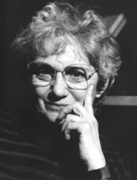c. 1900: The Industrial Revolution. The development of the industrial revolution leads to the separation of the maker of a product from the planner of the product. The maker becomes an engineer and factory, the planner becomes the designer who must interact with many people: client, engineer, and consumer.
1907: Deutsche Werkbund. birth of the idea that a designer brings quality craftsmanship into industrial production.
1919-1925: The Bauhaus School Weimar Period.
Form follows function becomes a guiding principle, with form serving as the link between client needs, material possibilities, and manufacturing realities. Louis Sullivan’s influence helps set the stage for the birth of modernism in design.
 1925-1946: The late and post-Bauhaus school. László Moholy-Nagy reframes design as form and function informed by science and elevated by aesthetics.
1925-1946: The late and post-Bauhaus school. László Moholy-Nagy reframes design as form and function informed by science and elevated by aesthetics.
![]()
1940s: World War II. Ergonomics enters the design vocabulary. Task analysis, cockpit layouts, and Raymond Loewy’s streamlined modernism shape both military equipment and everyday consumer products—from locomotives to corporate logos. Industrial design gains legitimacy as a profession.
1950s: Human-Centered Design. Henry Dreyfuss and others bring the focus to designing for real people, their needs, and their everyday contexts.

1960s: Aesthetics of elegance, Designers like Dieter Rams create timeless products for Braun, while companies like Olivetti (Marcello Nizzoli) and IBM (Eliot Noyes), invest in design as a competitive advantage.

1960-70s: Technologists like Muriel Cooper, Douglas Engelbaert, Alan Kay, etc., re-imagine technology as a domain for everyone not just engineers. In put devices like the mouse, outputs like the GUI, and media like hypertext are born. Suddenly technology needs design in order to serve these new potential users and they begin to appear at Bell Labs, DEC, and many other places we no longer hear of.
Early 1980s: Xerox introduces the GUI. Groundbreaking designers at Xerox—Marian Beard, Bill Verplank, Jeff Johnson—develop the graphical user interface. Apple popularizes it with the Macintosh, making computers accessible to schools and everyday users.
1980s: Design, Psychology and Technology. Cognitive psychologists like Brenda Laurel, Marilyn Tremaine, and Ben Shneiderman integrate user-centered thinking into HCI. The goal: make technology genuinely useful for professionals.
1990s: Design and HCI synthesize into UX design. As the decade progresses, the wild growth of the web leads the consumer to increasingly come into contact with technology. Designers and HCI professionals begin to synthesize their work: Design brings aesthetic forms and HCI brings ease of use. User-centered design where the design is heavily based on making technology accessible to the lay consumer (technological and end-user requirements). The triumph of minimalism and “Keep it simple, stupid.” The Usability and GUI is king. While design leaders like Katherine McCoy were trying to knock down those minimalist bludgeons arguing for the power of a rich design to communicate on multiple layers.
2000s: Customer-Centered Design The expansion of user-centered design to customer-centered design with the addition of business, financial requirements as well as end-user requirements. Design encourages HCI to embrace complexity and see customer needs in a systematic manner. GUIs are the center of all design. Data visualizations, machine learning in point solutions, etc. proliferate but resolve in a visual interface. Seeds of other interactions paradigms take root, mostly in research e.g. tangible computing.
2007: Apple Computer’s iPhone introduction. Aesthetics returns as a part of usability as consumers start demanding easy-to-use products. The smartphones start the disintegration and fracturing of the idea of an application to an increasing system of distributed devices with multiple modes of interaction (GUI, voice, touch, gesture, etc.). The more static and blog-like websites become commoditized UIs.
2010s: Platforms and stakeholders, Designers now account for business, legal, regulatory, and market stakeholders. Even expert tools are expected to be “consumer-grade” in usability and look. Apps become commoditized; systems thinking becomes vital.
2020s: The focus shift away from applications and journeys to systems. The computer becomes a proactive player in software creation, and the user more passive/observatory role. Complex systems thinking is now essential even for small software solutions as access to agentic technology spreads. If in the 2000s there was a transformation from one stakeholder: user-centered to multiple stakeholder-centered; now we go from single agent (the computer) to dual agent (computer + AI) to multiple stakeholder/multiple agent design, where agents extend over domains, systems, and markets. The gradual shift starts to agent-centered—or rather stakeholder-agent-centered design, where the agent can be the primary actor (but the stakeholder needs still must be understood thoroughly)
[Small note: it’s interesting to note that design’s essential activities as captured by Donald Schön (reflection in action), Herbert Simon (design as problem solving), Christopher Alexander (design patterns), and Nigel Cross (designerly ways of thinking), and others remain uniformly relevant.]
